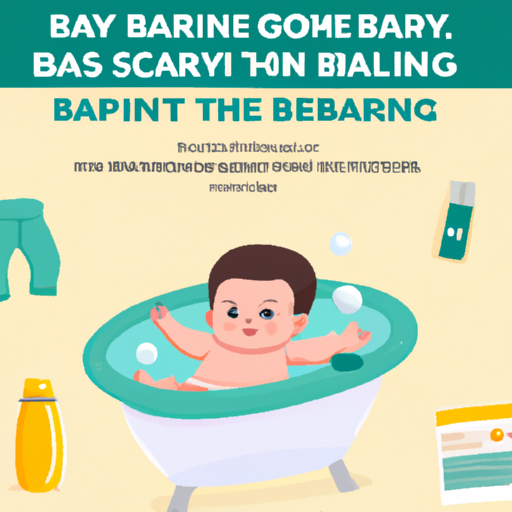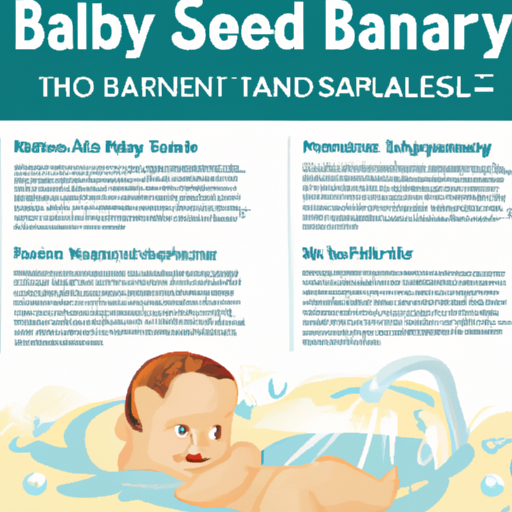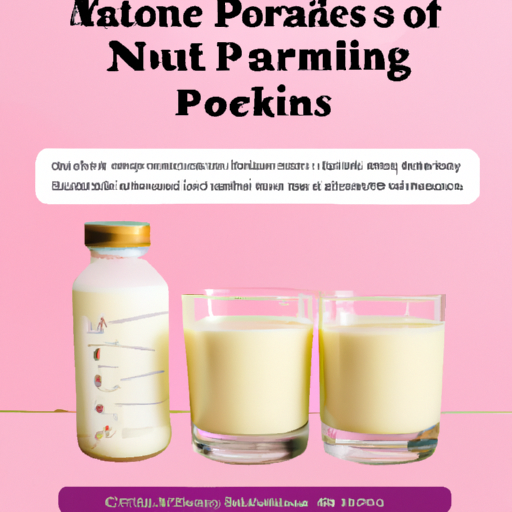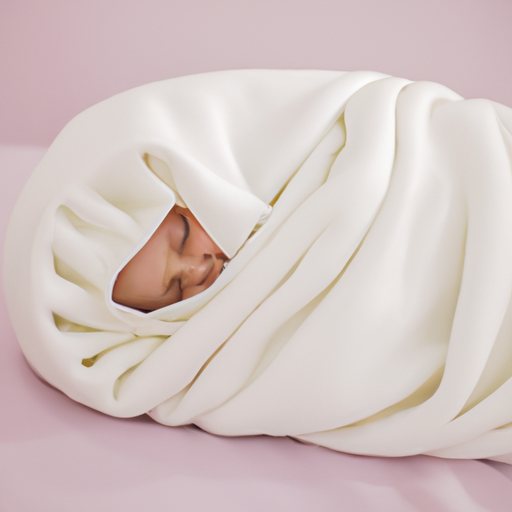Are you a new parent wondering about the best way to bathe your baby without any mishaps? Well, you’ve come to the right place! In this article, we’ll provide you with some useful tips and guidelines on how to ensure a safe and enjoyable bathing experience for your little one. From choosing the right products to creating a comfortable bathing environment, we’ve got you covered. So, grab a towel and let’s dive in!
If you want to learn more about the dos and don’ts of bathing your baby, stay tuned! We’ll discuss everything from the optimal water temperature and bathing frequency to the importance of supporting their head and neck during the process. Additionally, we’ll provide some practical advice on how to handle a slippery baby, as well as tips for drying and moisturizing their delicate skin. By following these simple yet crucial steps, you’ll not only keep your baby safe during bath time but also create a loving and bonding experience for both of you. So, let’s get started on this journey of learning how to safely bathe your baby! Bathing your baby can be a wonderful bonding experience, but it’s essential to prioritize their safety at all times. With a few simple steps and precautions in place, you can ensure that bath time is enjoyable for both you and your little one. In this article, we will walk you through each stage of bathing your baby safely, from preparing the bathing area to addressing common concerns. So, let’s get started!

Preparing the Bathing Area
Before bringing your baby into the bathroom, it’s important to clean and sanitize the bathtub. Start by removing any debris or dirt, and then wipe down the tub with a mild cleaning solution. Rinse thoroughly to ensure that no cleaning product residue remains. This step is crucial in eliminating any potential bacteria or germs that could cause harm to your baby’s delicate skin.
Next, gather all the necessary bathing supplies before introducing your baby to the water. Towels, washcloths, a soft sponge, baby soap or cleanser, shampoo, and any other items you may need should be within arm’s reach. This way, you can keep one hand on your baby at all times while still being able to access everything you need.
Checking the Water Temperature
One of the most important aspects of bathing your baby safely is to ensure the water temperature is just right. Fill the bathtub with lukewarm water before placing your baby inside. The ideal water temperature should be around 100 degrees Fahrenheit (38 degrees Celsius). To accurately measure the water temperature, you can use a bath thermometer, which will give you an instant reading. Always double-check the water temperature using your wrist or elbow, as it’s the most sensitive part of your skin.
Undressing and Supporting the Baby
Once you’ve confirmed that the water temperature is safe, it’s time to undress your baby. Remove their clothes slowly and carefully, ensuring that their head and body are fully supported throughout the process. You can cradle their head in one hand while using the other hand to undress them gently. Remember to keep a firm grip on your baby to prevent any accidents or slips.
Washing the Baby’s Body
Now that your baby is undressed, it’s time to wash their body. Choose a mild, baby-friendly soap or cleanser that is specifically designed for their sensitive skin. Apply a small amount of soap to a soft cloth or sponge and gently clean each body part, starting from their face and working your way down. Remember to pay extra attention to their skin folds, behind their ears, and the diaper area.

Caring for the Baby’s Hair
When it comes to washing your baby’s hair, simplicity is key. Wet their hair with warm water, and then gently massage a small amount of baby shampoo into their scalp. Be gentle and use your fingertips to lather the shampoo, avoiding any vigorous rubbing or pulling. Rinse their hair thoroughly with water, ensuring that no shampoo residue is left behind.
Rinsing and Drying the Baby
After you have finished washing your baby’s body and hair, it’s crucial to rinse off all the soap and shampoo thoroughly. Leaving any residue on their skin can cause irritation or even allergic reactions. Use a cup or your hand to pour water over their body, ensuring that no soap suds remain.
Once your baby has been thoroughly rinsed, gently pat their skin dry with a soft towel. Avoid rubbing or scrubbing the towel against their skin, as this can cause friction and lead to skin irritation. Instead, pat their body gently, paying special attention to their skin folds to prevent any moisture buildup.
Moisturizing and Diapering
To keep your baby’s skin soft and moisturized, apply a baby lotion or moisturizer after drying them. Choose a product that is specifically formulated for infants and free from harsh chemicals or fragrances. Gently massage the lotion into their skin, paying extra attention to areas that may be prone to dryness, such as their elbows, knees, and cheeks.
After moisturizing, it’s time to diaper your baby. Replace their wet or soiled diaper with a clean one, making sure it fits snugly but not too tightly. Ensure that the diaper is secure and comfortable for your baby before dressing them in clean, comfortable clothes. Dressing your baby in loose-fitting clothing made from soft, breathable materials will help keep them cozy and prevent any irritation.
Safety Measures to Remember
While bathing your baby, it’s essential to never leave them unattended in the bathtub. Babies can drown in as little as one inch of water, so constant supervision is crucial. If there is an urgent need to leave the bathroom, wrap your baby in a towel and take them with you.
Additionally, keep all bathing supplies within arm’s reach to avoid any accidents. This includes essentials such as towels, washcloths, soap, and shampoo. Being prepared and organized will reduce the risk of your baby getting hurt while you reach for something out of their reach.
Dealing with Common Concerns
Bath time may not always go smoothly, and it’s normal for babies to express their discomfort or fussiness during the process. If your baby becomes fussy or starts crying, try to soothe them by speaking softly, singing a lullaby, or gently rocking them back and forth. Some babies find comfort in hearing the sound of running water, so you can try adjusting the water flow or playing soft music to create a calming atmosphere.
If your baby has sensitive skin or is prone to allergies, it’s essential to choose bathing products that are hypoallergenic and free from harsh chemicals. Always perform a patch test on a small area of their skin before introducing a new product. If any irritation or redness occurs, discontinue use immediately and consult a healthcare professional.
Conclusion
Bathing your baby should be a soothing and enjoyable experience for both of you. By following these steps and safety measures, you can ensure that bath time is safe and filled with love and care. Remember to always prioritize your baby’s well-being, and enjoy watching them splash and play in the water.





